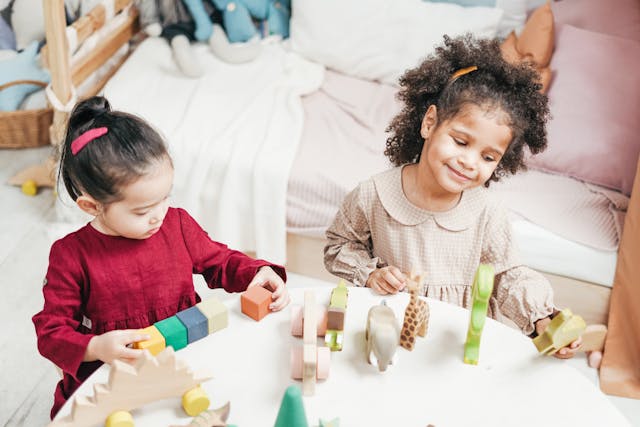When parents decide to separate or divorce, it often means children will have to live in two homes. This can be a big change for kids, and they might feel worried or confused. As a parent, it’s important to help your child feel safe and secure, no matter which home they are in. With a little planning and effort, you can create a smooth transition for your child and make sure they feel comfortable in both homes.

Open and Honest Communication
One of the best ways to help your child feel secure is by talking to them about what’s happening. Kids can feel scared if they don’t know what’s going on. So, it’s important to be open and honest with them. Explain the new living arrangements clearly. Let them know which days they’ll be at each home and what they can expect.
Encourage your child to ask questions. They might want to know why things are changing or how long it will stay this way. Answer their questions in a way that they can understand, but always be honest. If you don’t know the answer to a question, it’s okay to say that you don’t know, but you’ll figure it out together. Having regular family talks can help keep everyone on the same page and clear up any confusion.
Consistent Routines in Both Homes
Kids feel more secure when they know what to expect. That’s why having similar routines in both homes can make a big difference. Try to keep important parts of your child’s day, like bedtime, mealtimes, and homework, as consistent as possible. If your child has a bedtime routine at one house, try to make it the same at the other house.
Consistency helps children feel safe because they know what’s coming next. According to a divorce lawyer in Sacramento, this is important because it makes the transition between homes easier since the rules and schedules don’t change too much. Talk with your co-parent about creating similar rules and schedules in both homes. For example, if one house has a rule about no screen time before bed, it’s helpful if the other house has the same rule.
Create a Personal Space for the Child in Both Homes
Kids need a place to call their own, even if they’re living in two homes. Having a personal space in both homes helps children feel like they belong. It doesn’t have to be a big room; even a small area can make a difference. The important thing is that your child feels like they have their own spot where they can relax and feel comfortable.
Let your child help decorate their space. Maybe they want to pick out special bedding or bring their favorite toys. This helps them feel more connected to both homes. When kids have a personal space that feels like their own, they are more likely to feel safe and secure, no matter which house they are in.
Encourage Positive Co-Parenting
How parents treat each other after a separation is very important. If parents are always arguing or speaking badly about each other, children can feel stuck in the middle. Positive co-parenting helps kids feel like everything is okay, even though things have changed. Try to be respectful and cooperative with your co-parent.
Keep any disagreements or conflicts away from your child. When talking about the other parent, use kind words and stay calm. Kids need to see their parents working together, even if they live in different houses. This helps them feel secure because they know both of their parents love them and are still a team when it comes to taking care of them.
Provide Reassurance and Emotional Support
Living in two homes can feel strange for a child, especially at first. They may miss one parent while they are at the other parent’s house. It’s important to give your child lots of love and reassurance during this time. Let them know that it’s okay to feel sad or confused. Remind them that both parents love them, no matter which house they are in.
Sometimes kids just need to talk about their feelings. Be a good listener, and encourage your child to share how they’re feeling. Let them know that all their feelings are valid and it’s okay to feel upset. Offer extra hugs and comforting words when they are feeling down. Over time, this emotional support will help them adjust to the new living arrangements.
Be Flexible and Patient
Adjusting to living in two homes can take time. Some children adapt quickly, while others might need more time to get used to the new routine. Be patient with your child during this transition. Don’t rush them to feel comfortable; instead, let them take their time to adjust.
It’s also important to stay flexible. If something isn’t working, don’t be afraid to make changes. Maybe the schedule needs tweaking, or maybe your child needs more time at one house before they feel ready to move back and forth. Pay attention to how your child is feeling and be ready to adjust if necessary. If you notice signs of distress, such as trouble sleeping or withdrawing, consider talking to a professional, like a therapist, who can help guide your child through the transition.
Helping children feel secure in two homes after a separation or divorce is a big task, but it’s possible with effort and understanding. Open communication, consistent routines, a personal space in each home, positive co-parenting, reassurance, and patience can all help your child feel safe and loved. Remember that this process will take time, and each child is different. With the right support, your child can feel comfortable and secure in both homes, knowing that they are loved and cared for by both parents.
















Add Your Comment